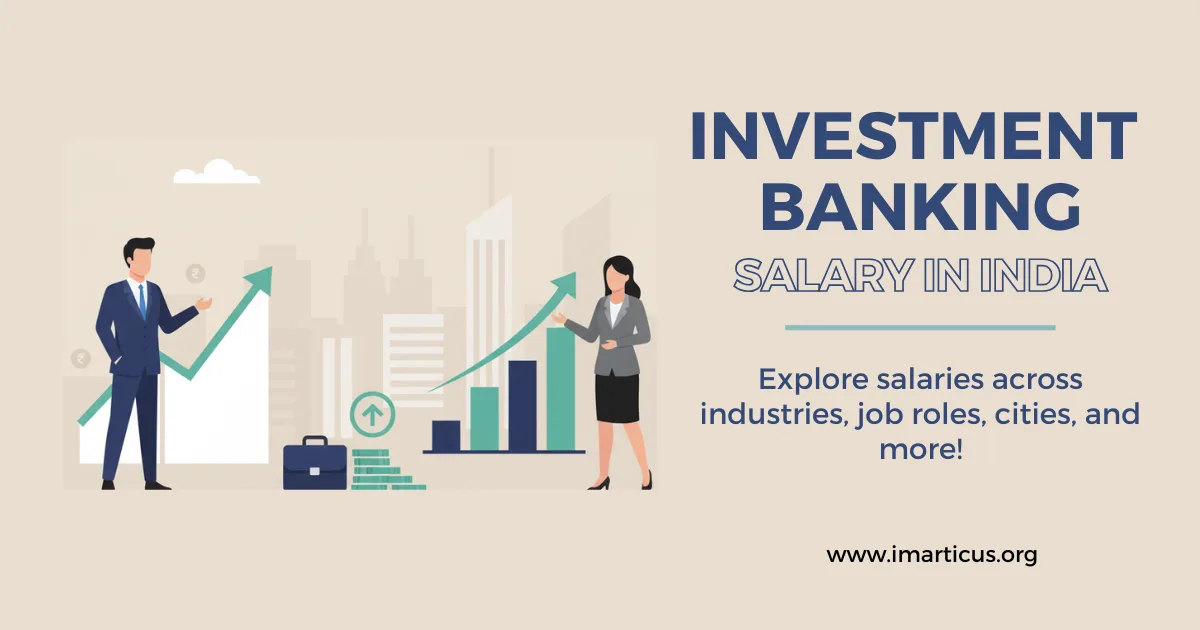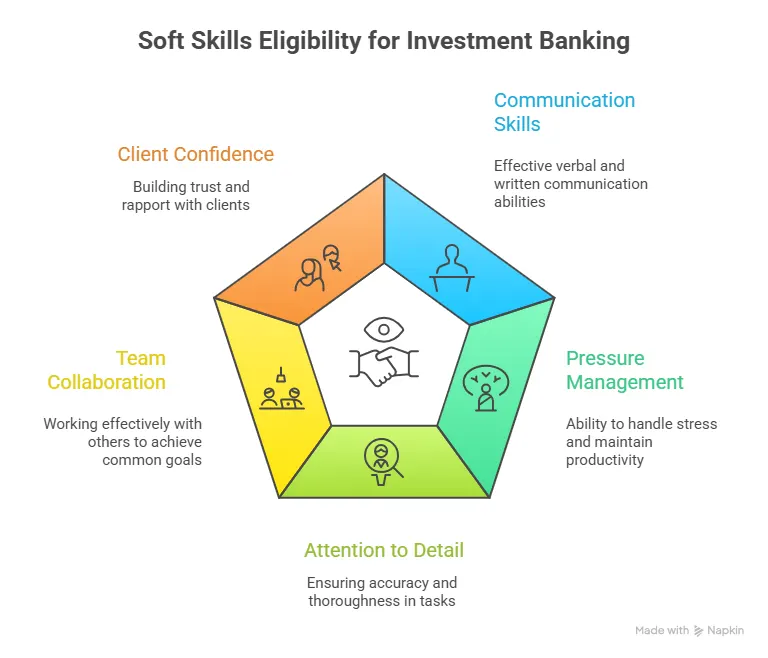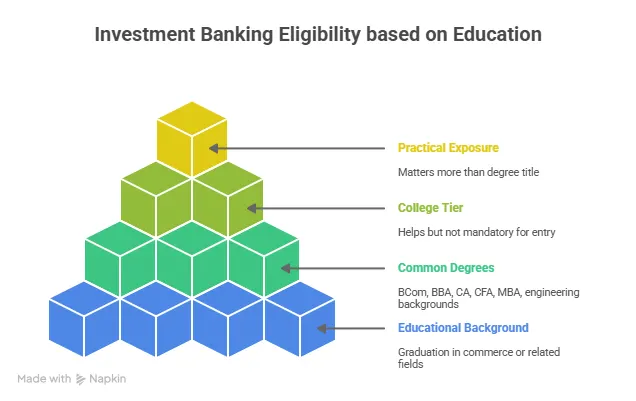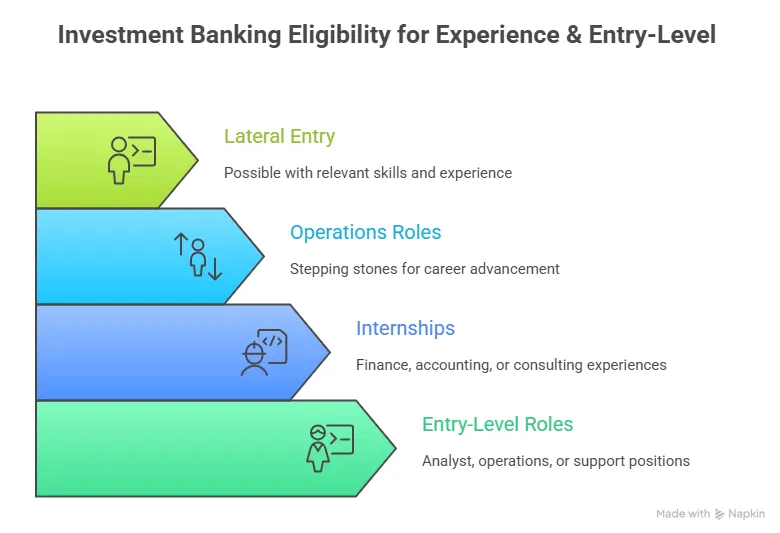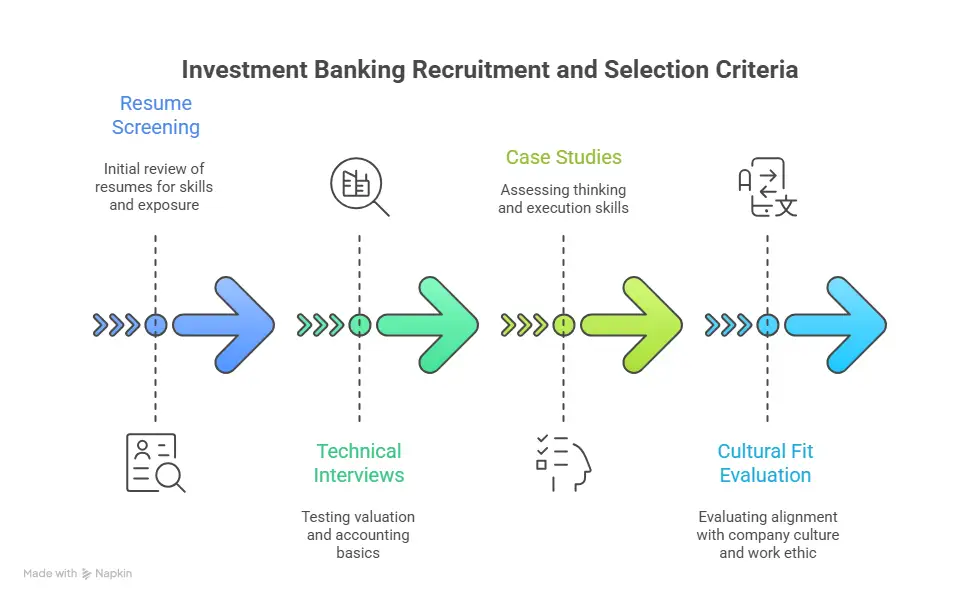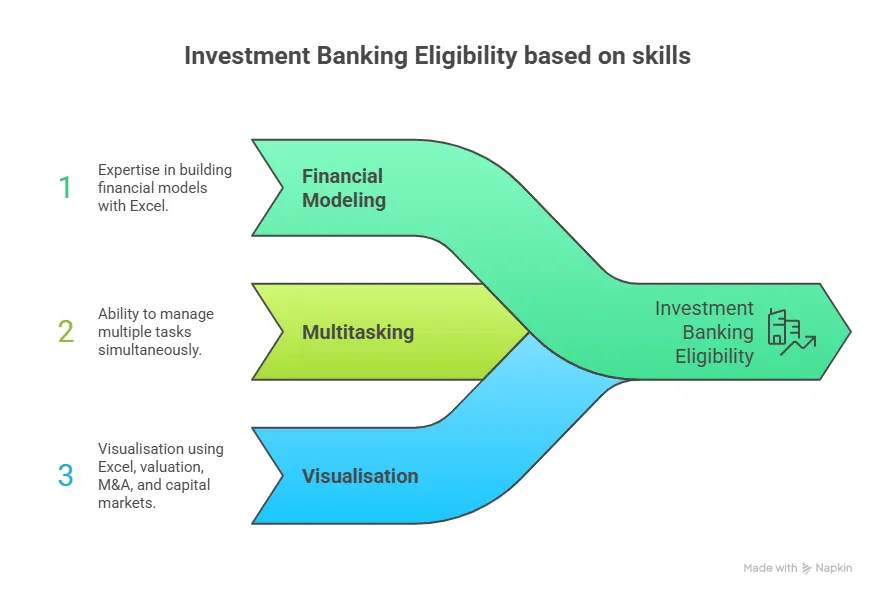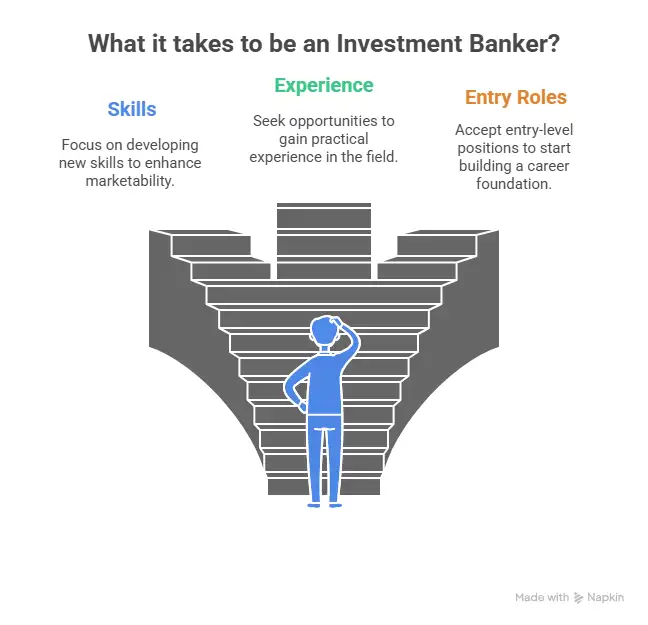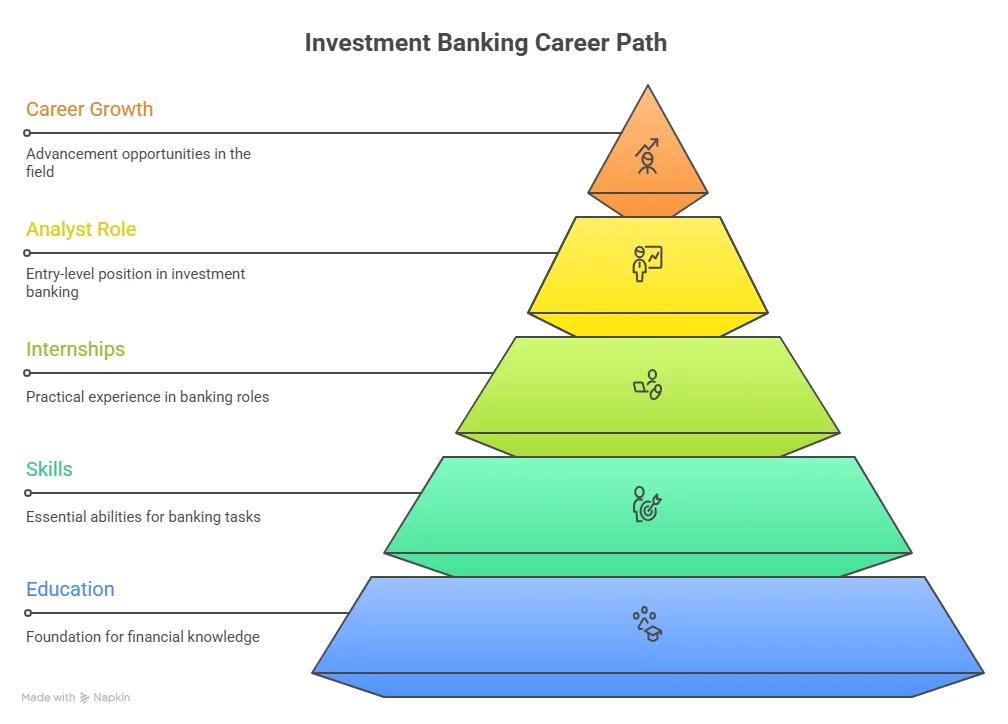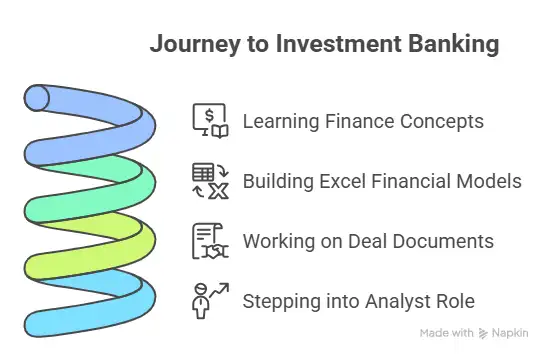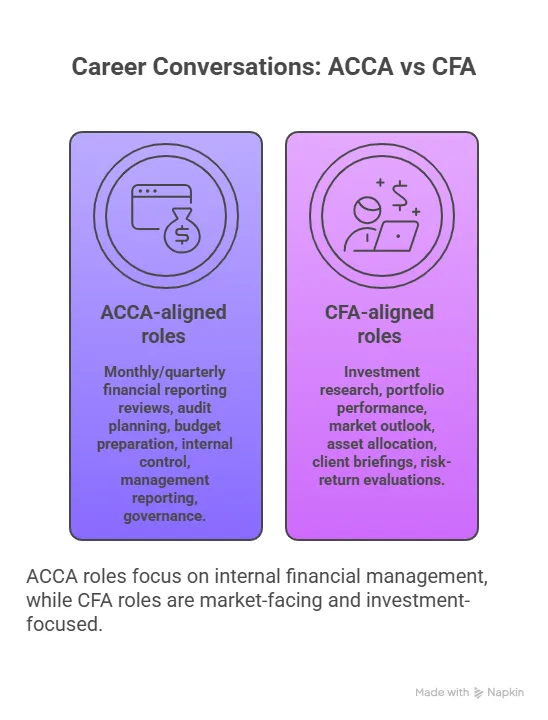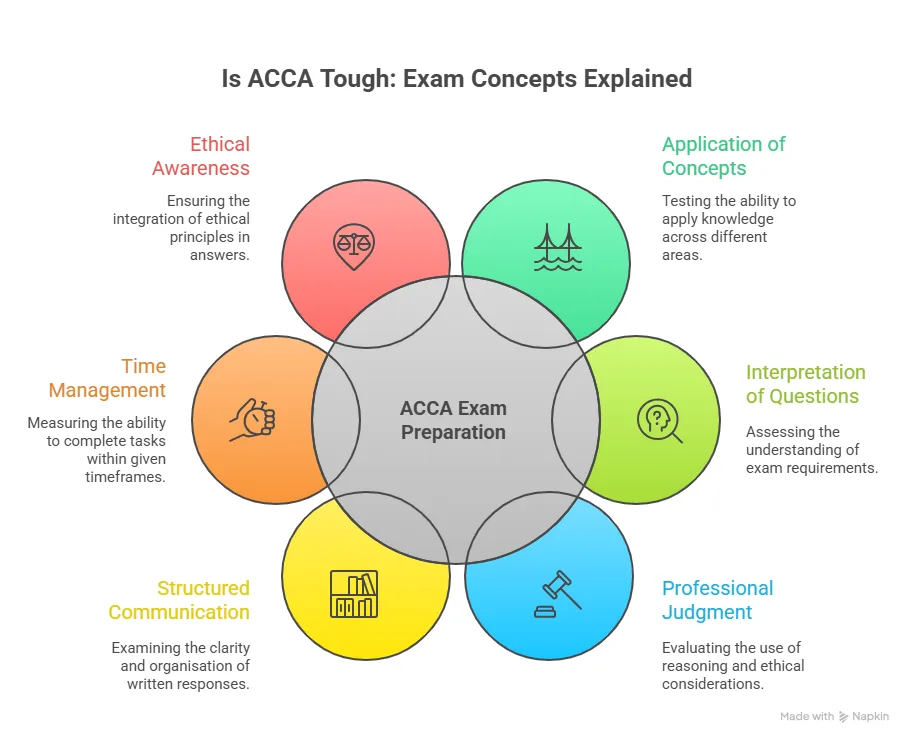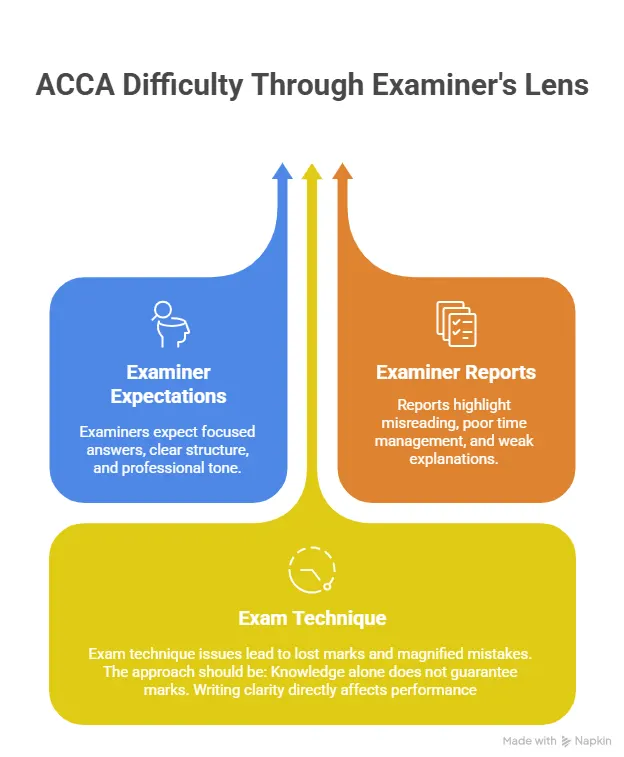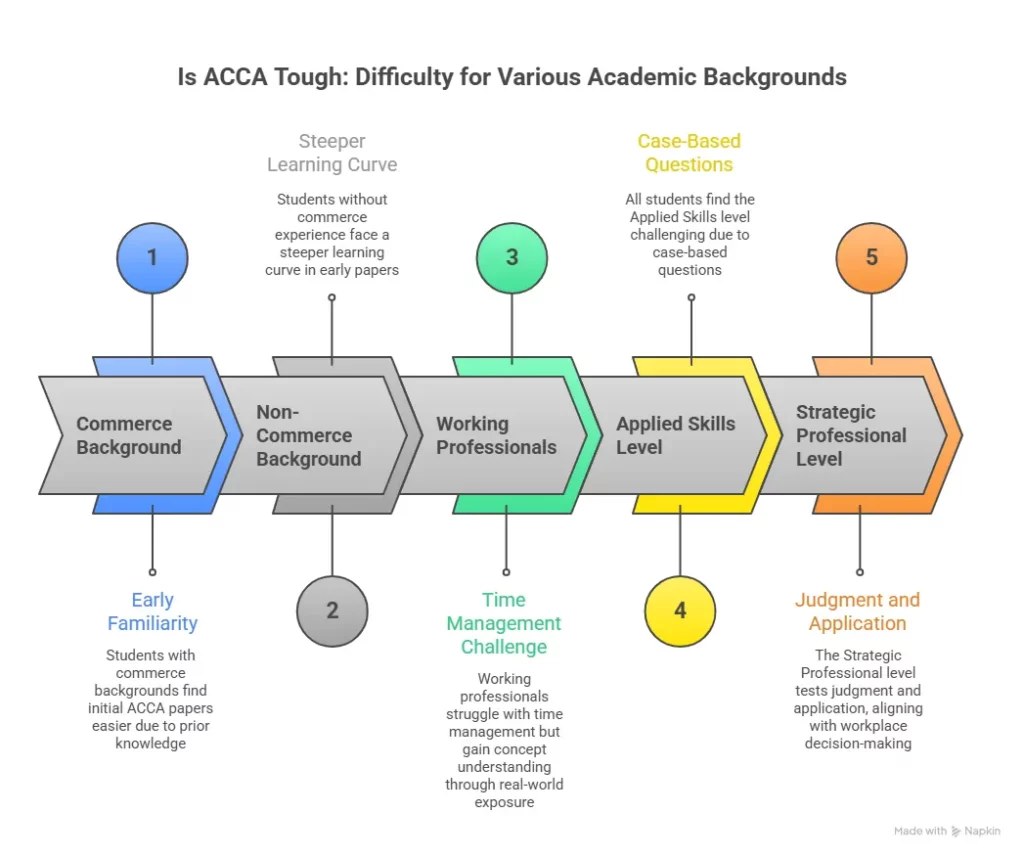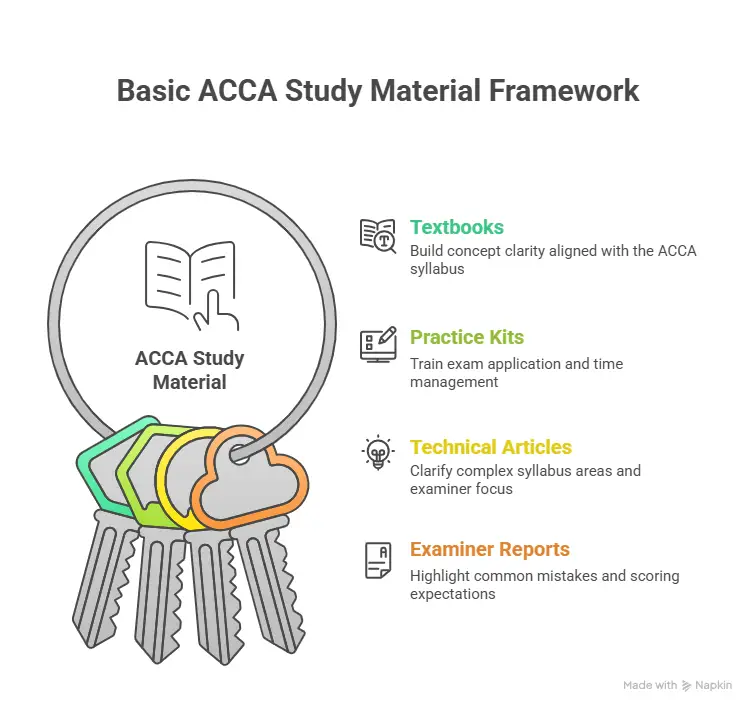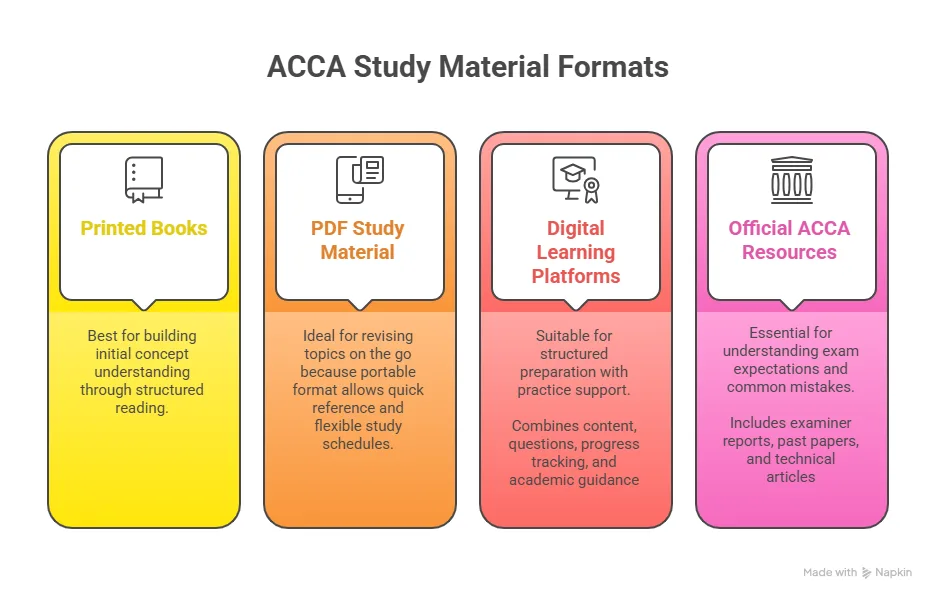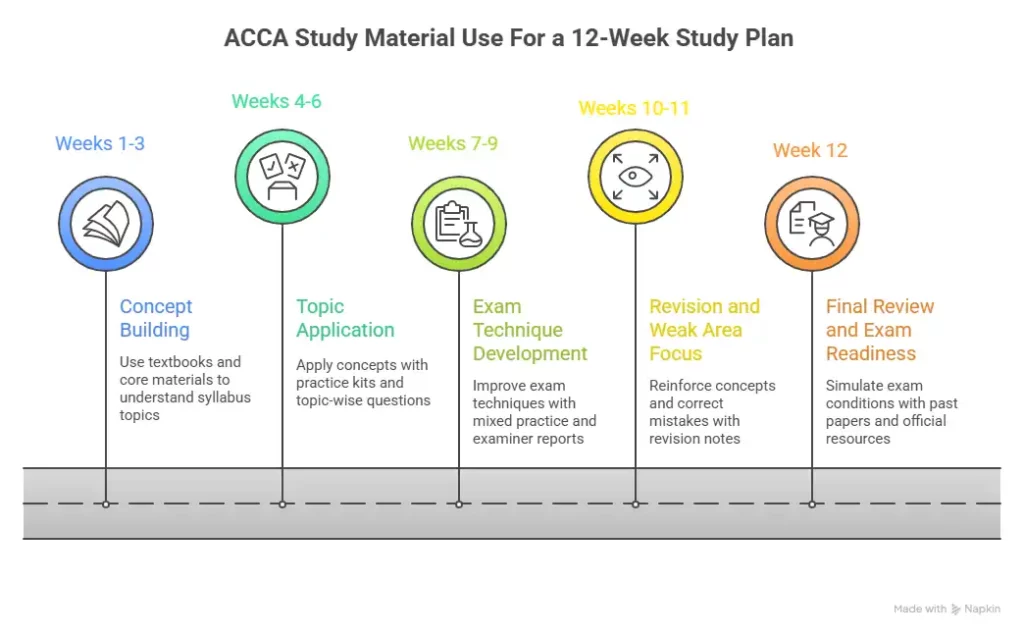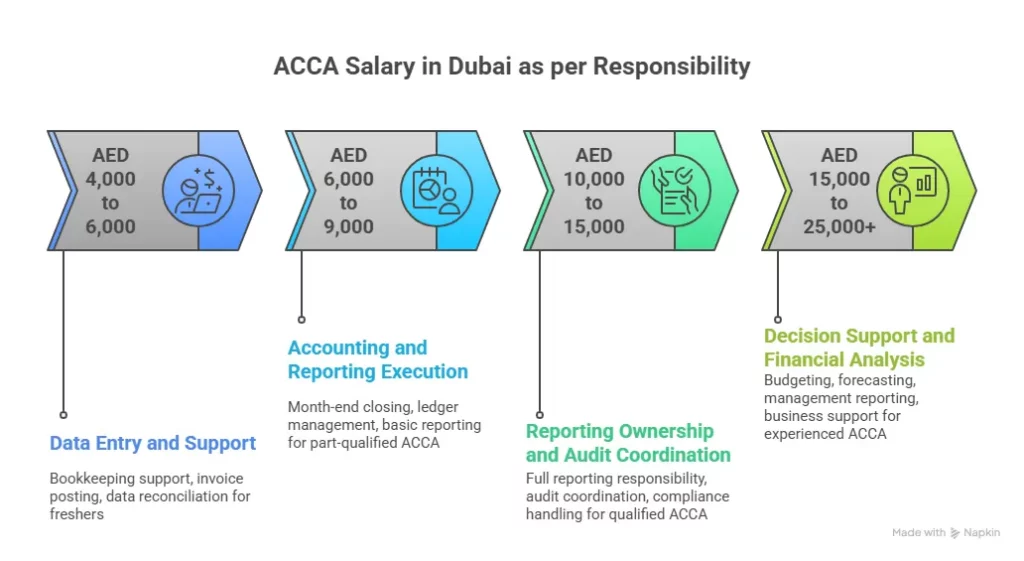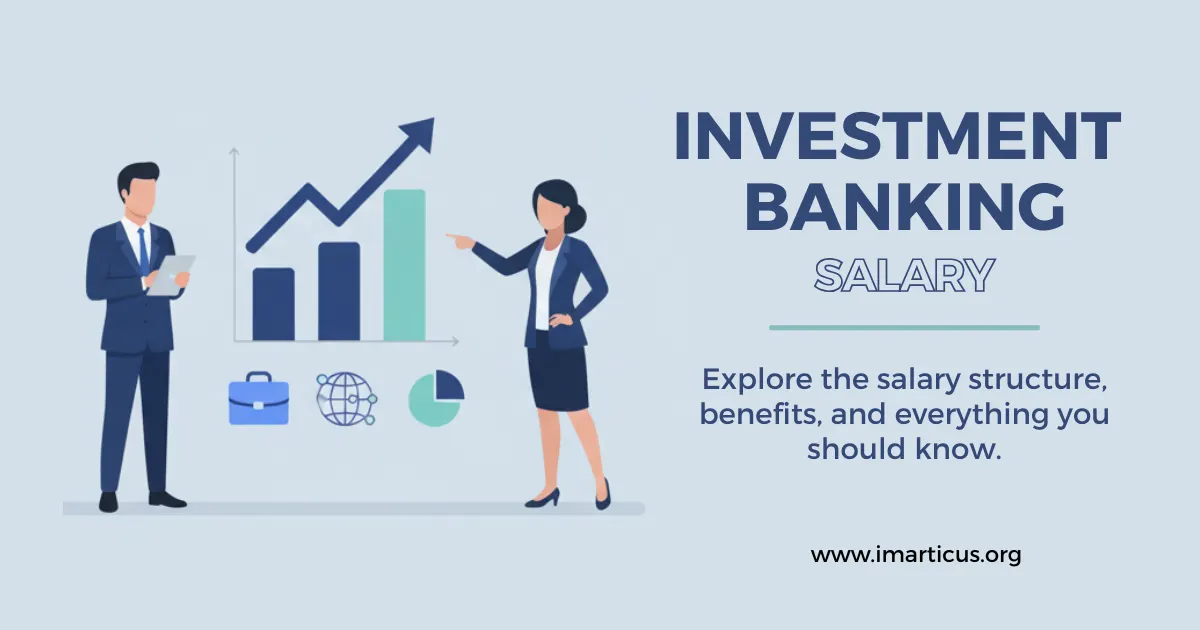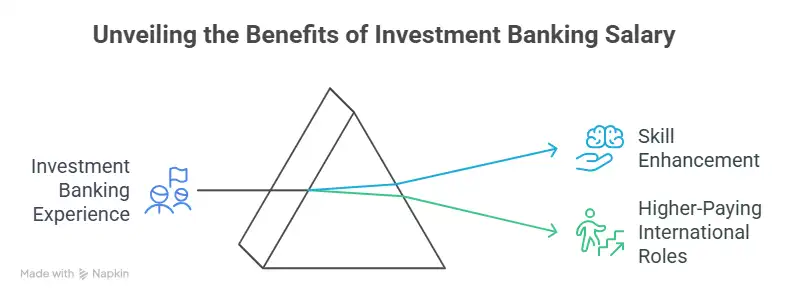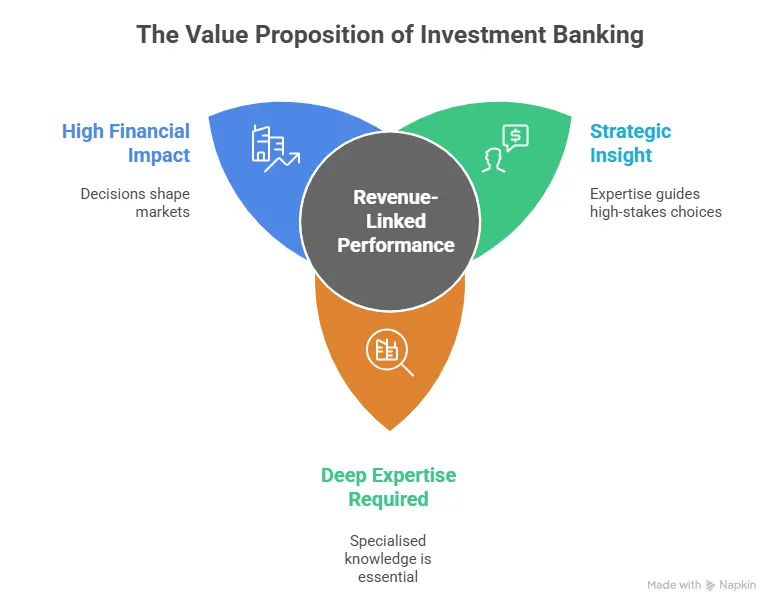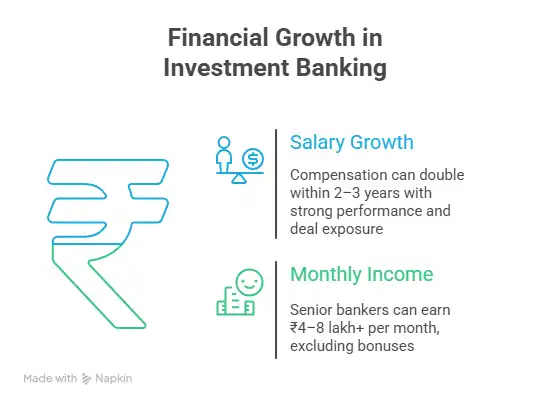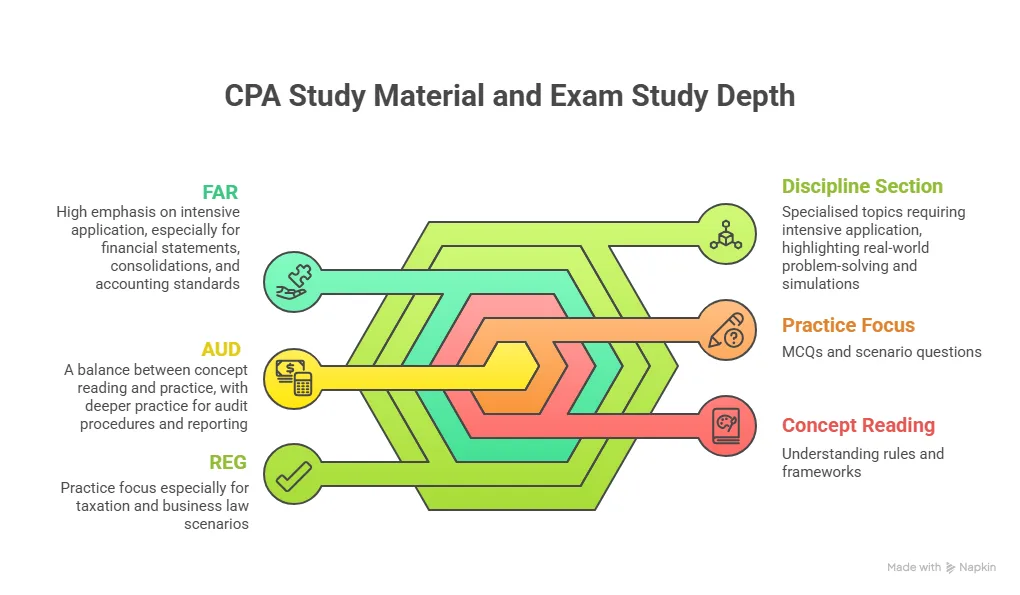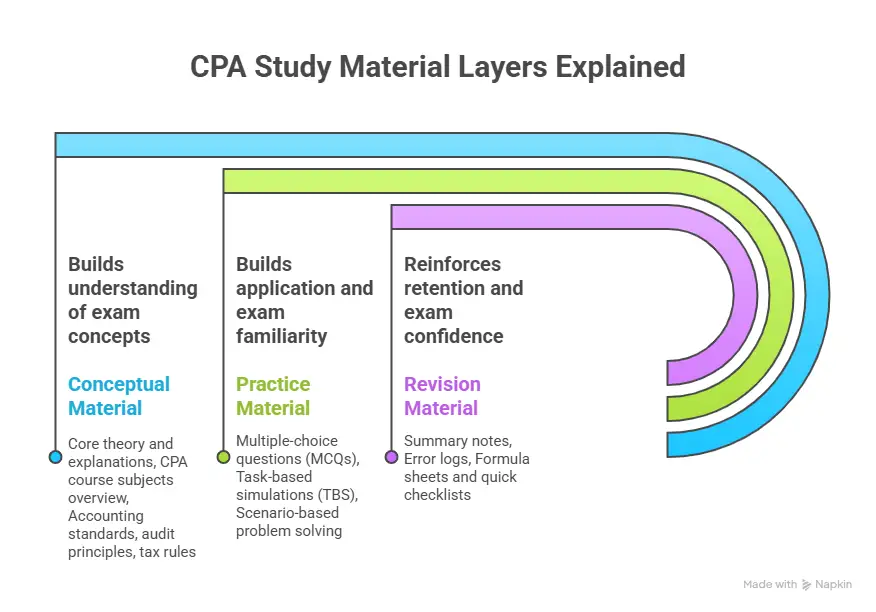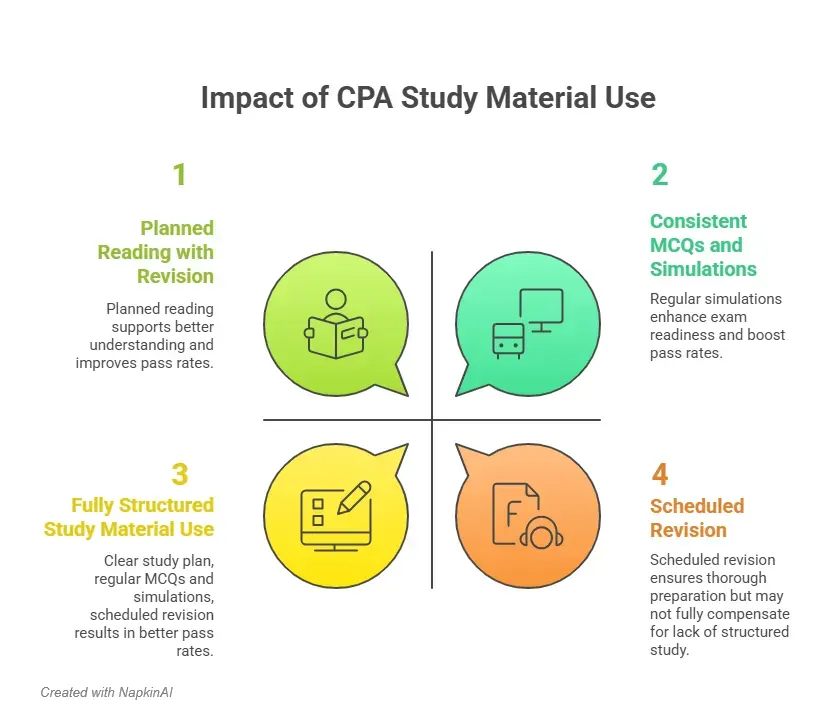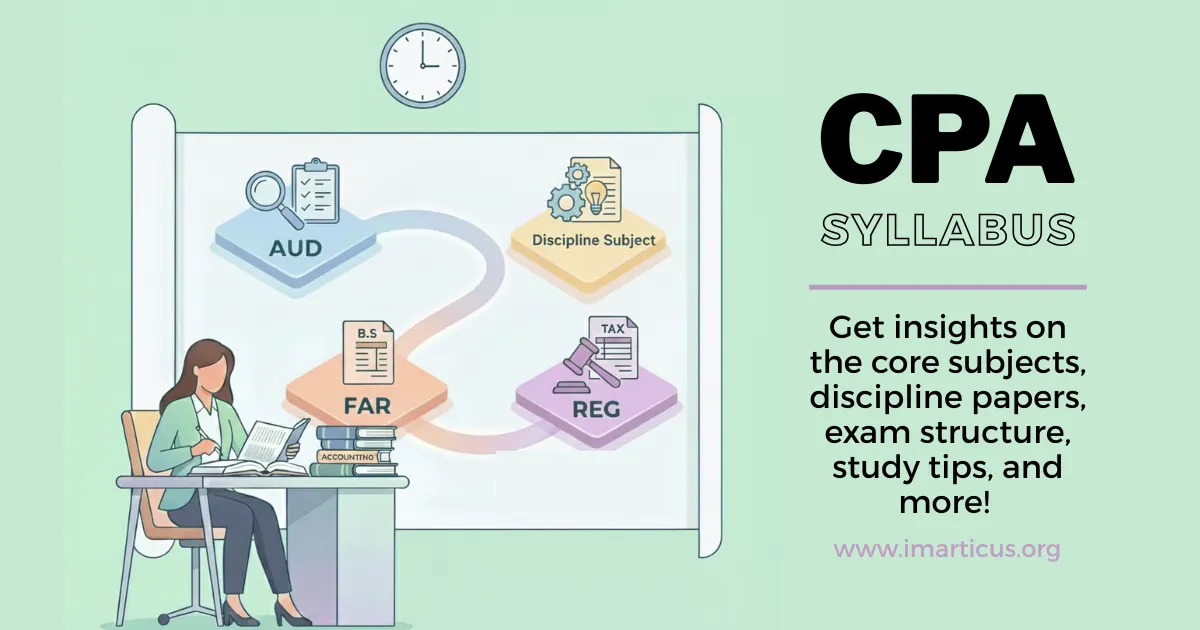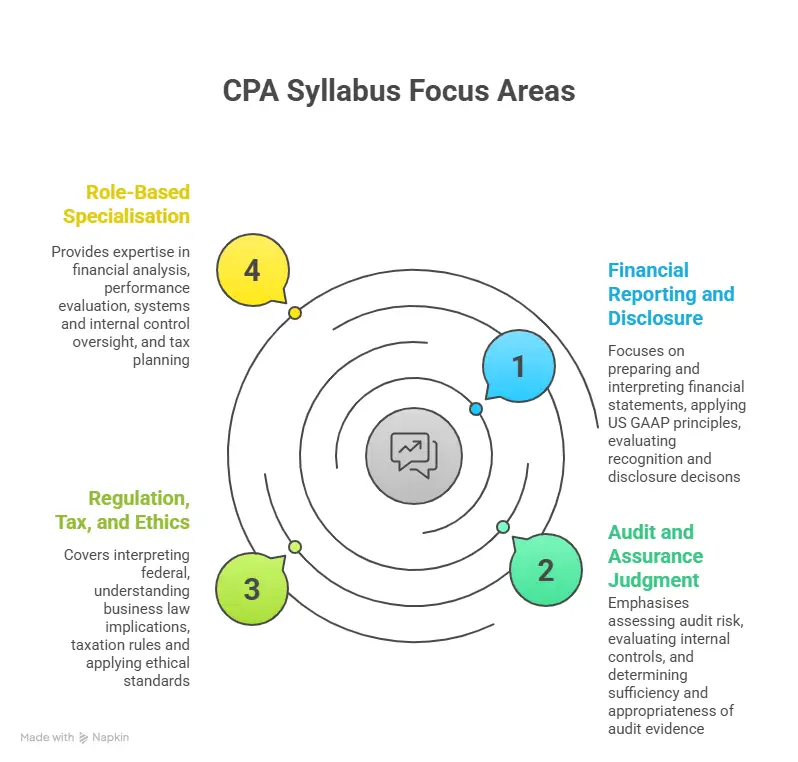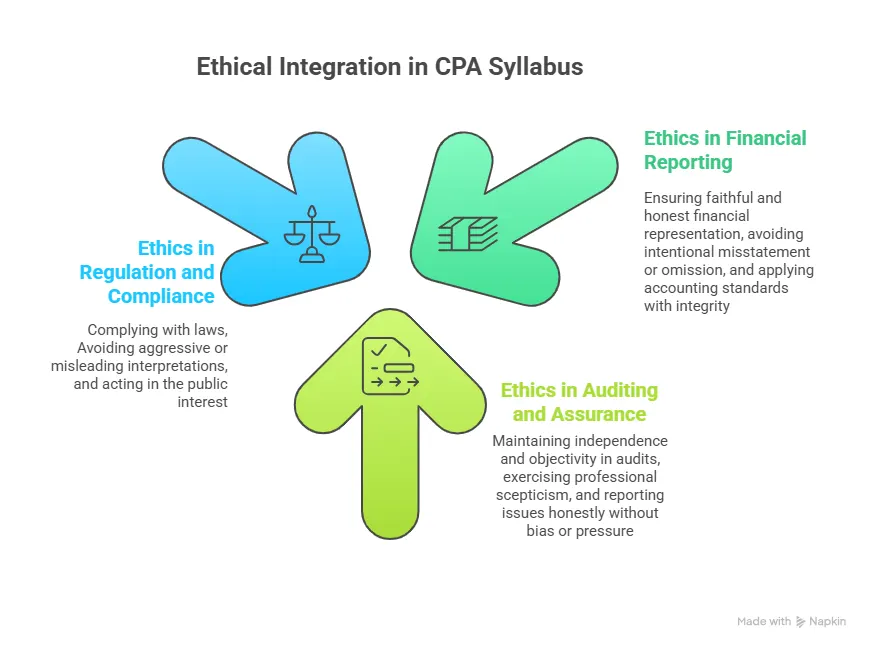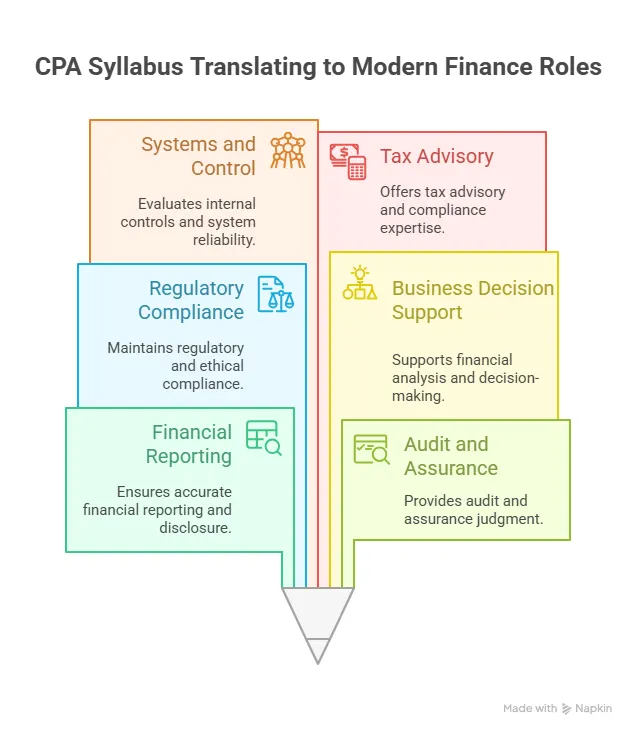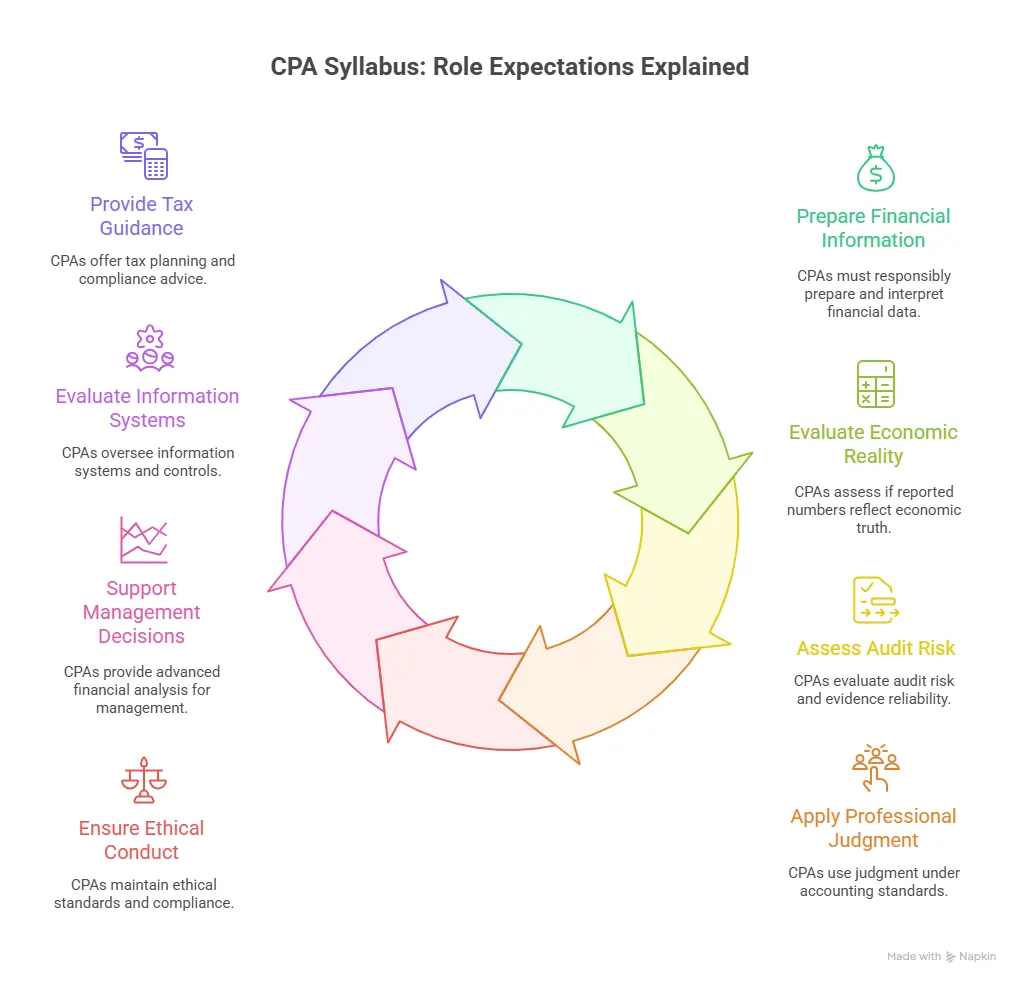You hear the numbers in passing. A friend mentions a long night at the office, but casually drops a salary figure. A LinkedIn post discusses bonuses without mentioning the hours that went into them. Someone says investment banking pays “really well,” but never explains how that actually looks over time in India.
That’s usually where the questions start.
Is the investment banking salary in India really that high?
Does the pay grow steadily, or only for a select few who reach the top?
And most importantly, does investment banking in India really reward the effort it demands?
These questions often lead people to look beyond just numbers – toward roles, career paths, and even whether an investment banking certification can influence starting pay or long-term growth by improving entry roles and progression speed.
If you’re a fresher trying to understand what entry-level pay actually looks like, or a few years into finance, wondering how investment banking salary grows after 3 to 5 years, this confusion is normal. The numbers exist, but they’re rarely explained in context.
This guide breaks down investment banking salary in India the way it’s experienced in real careers – stage by stage, role by role, without exaggeration and without selling a dream. Just the trade-offs, the growth, and the reality.
Salary Insight:
Investment banking salary in India varies far more by role and exposure than by degree alone. Two professionals with similar qualifications can see completely different pay trajectories within just a few years.
Understanding Investment Banking
Before looking at salaries, I’ll answer the most common doubt: what is investment banking, and what does the day-to-day work involve? Because once you do, the Investment Banking Salary in India stops feeling random.
In simple terms, investment banking is about helping companies when the financial decisions are big and the pressure is high.
- This could be raising money,
- Buying another company,
- Selling part of the business,
- Figuring out what to do when finances are tight.
These aren’t routine investment decisions – they’re the kind that can change the direction of a company.
As you gain experience, the role slowly shifts. You’re no longer just executing tasks. You start understanding why decisions are being made, how deals are structured, and what clients actually care about. More responsibility comes your way, along with more pressure.
| What People Often Imagine | What the Work Actually Looks Like |
| Constant deal-making and excitement | Long hours spent reviewing numbers and details |
| High-energy meetings all day | Quiet, focused work behind screens |
| Glamorous, fast-paced decisions | Reworking models, fixing presentations, and checking accuracy |
| Big moments are happening daily | Pressure to get things right, even when time is tight |
This is the reason investment banking pays well. You’re not just paid for what you know. You’re paid for reliability, accuracy, and your ability to handle stress when things get intense.
So when people talk about investment banking salary in India, it’s not just about the money. It’s about whether you’re comfortable with this kind of work and pace over time.
For anyone evaluating an investment banking career, understanding how pay evolves is just as important as knowing the starting numbers. Once that’s clear, it becomes much easier to decide if investment banking is right for you – beyond just the salary figures.
If you want to see how this work actually looks in practice, this short video breaks down what investment banking roles involve on a day-to-day basis and why the job feels so different from what most people imagine:
Why Investment Banking Pays More Than Most Finance Roles
While some candidates explore investment banking exams to strengthen their profiles, salary progression ultimately depends more on on-the-job performance than exam credentials alone. Investment banking sits in a different salary bracket for a reason – and it’s not just because of the brand names or the prestige attached to the role.
The levels of investment banking salary in India are higher because the job demands more from you, much earlier in your career, compared to most other finance roles. Banks aren’t paying for degrees alone. They’re paying for pressure, responsibility, and reliability.
The pressure and responsibility involved in investment banking are a key reason why investment banking salaries in India rise faster than most other finance careers once you move beyond entry-level roles.
Investment banks pay for things like:
- High-stakes decision-making – Even junior team members work on transactions involving large sums of money. A small error in analysis, valuation or documentation can have serious consequences, which is why attention to detail is non-negotiable.
- Long working hours under tight deadlines – Deal timelines don’t pause. Late nights, last-minute changes, and weekend work are common for investment bankers, especially during live transactions. The salary reflects this intensity.
- Accuracy where mistakes cost millions – Unlike routine finance roles, investment banking work leaves very little room for error. Every number, assumption, and slide needs to be right.
- Direct impact on deals, capital, and clients – Investment bankers don’t just process information – they influence outcomes. Their work directly affects fundraisers, mergers and acquisitions, and strategic decisions.
This is why investment banking job salary in India is typically higher than roles in accounting, audit, or general corporate finance – even at the entry level. A fresher joining investment banking is often paid more than someone with similar experience in other finance functions because the expectations are fundamentally different.

This is also why developing the right investment banking skills – from financial analysis to execution accuracy – has a much bigger impact on pay than titles or credentials.
It’s also the reason investment banking is frequently listed among the best-paying after-placement courses in India – but only when paired with the right skills. Without strong technical ability, financial statements understanding, and the capacity to handle pressure, the high salaries aren’t sustainable.
In short, investment banking salary in India isn’t high by accident. It’s a direct reflection of the demands of the role, the value created for clients, and the level of responsibility professionals carry from day one.
Did You Know?
The pressure and responsibility involved in investment banking are a key reason why investment banking salaries in India rise faster than most other finance careers once you move beyond entry-level roles.
Investment Banking Starting Salary in India
At the entry level, investment banking eligibility is often judged by practical readiness rather than degrees, which explains why starting salaries vary so widely among freshers. Let’s start with what most people care about first – the starting pay.
Investment Banking Salary in India for Freshers
If you’re entering investment banking in India as a fresher, your salary will mainly depend on the role you start in and the kind of team you join. Here’s what entry-level pay usually looks like:
- Investment banking analyst salary in India: ₹6-12 LPA
- Investment banking operations salary in India: ₹4-7 LPA
- Front-office or global team roles: ₹10-15 LPA
These are not extreme cases. They’re fairly typical ranges across banks in India. What often surprises people is how much the numbers can vary – even among freshers with similar degrees. Your starting salary is influenced by:
- The role you’re hired into (analyst vs operations)
- The bank and a specific team.
- The city you work in, especially Mumbai or Bangalore.
- And most importantly, the skills you bring beyond your qualifications.
This is why two people with the same degree can end up with very different pay outcomes in investment banking, right from the start.
Career Reality – For analysts, investment banking salary in India grows fastest when combined with global deal exposure. Teams supporting overseas markets often see higher bonuses and quicker progression.
Investment Banking Analyst Salary in India
While many professionals come from a finance or commerce background, an investment banking degree alone doesn’t determine long-term growth – the work demands far more than academic knowledge. The investment banking analyst salary in India usually applies to professionals in their first 0 to 3 years. This is the phase where the work is intense and highly execution-focused.
As an analyst, most of your time goes into building models, checking numbers, preparing presentations, and supporting live deals under tight deadlines.
Here’s what analysts typically earn:
| Component | Typical Range |
| Base Salary | ₹6-10 LPA |
| Bonus | 10-50% of base salary (performance & deal flow dependent) |
| Total Compensation | ₹7-14 LPA |
Analysts working with global or overseas deal teams often earn more than those focused only on domestic assignments, especially in large international banks.
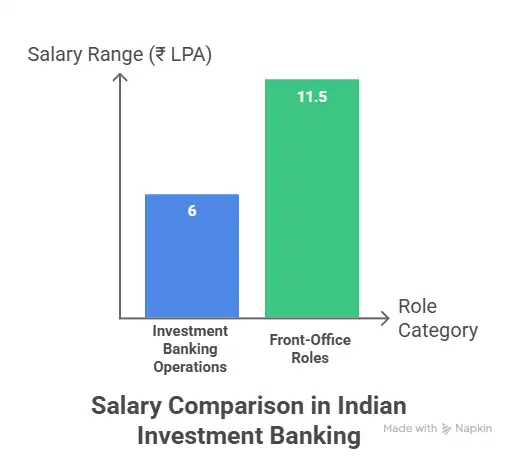
Investment Banking Associate Salary in India
Once you move past the analyst stage, the salary jump is noticeable. What Associates typically earn:
| Component | Typical Range |
| Base Salary | ₹12-20 LPA |
| Bonus | 30-100% of base salary |
| Total Compensation | ₹15-30 LPA+ |
Most professionals reach this level after 3 to 5 years of experience, which often leads to associate-level compensation that sits well above most other finance roles. Or after completing an MBA, with a higher post-MBA investment banking salary in India.
At the associate level, the job changes. You’re no longer valued only for getting the numbers right. You’re expected to think through problems, communicate clearly, and take ownership of parts of a deal. The investment banking salary in India reflects that shift – from execution to ownership – rewarding judgment, communication, and the ability to manage deal workflows.
This is also where pay growth in Indian investment banking starts to pull well ahead of many other finance careers – and continues to grow from there.
Salary Snapshot:
Unlike many finance roles, investment banking salary in India includes a strong performance-linked component. Bonuses often reflect deal flow and individual contribution, not just tenure.
Investment Banking Salary After 5 Years in India
This is the stage where investment banking really starts to pull ahead of most other finance careers in India.
By the time you reach the 5-year mark, professionals are no longer paid just for execution. Their compensation reflects experience, judgment, and the ability to handle responsibility during live deals.
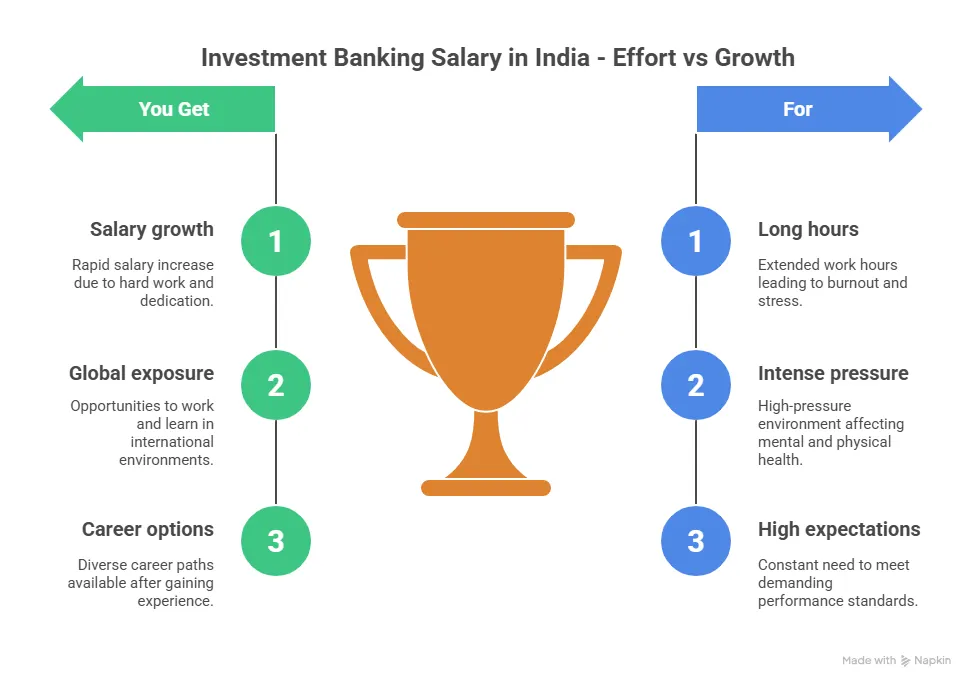
What Salary Looks Like After 5 Years
At this stage, total pay often sits between ₹25-45 LPA, and strong performers can go higher in busy deal cycles where bonuses really add up.
This is the level where your role changes significantly. You’re expected to manage junior team members, review their work, interact directly with clients, and contribute to deal strategy – not just follow instructions.
This is also where investment banking salary in India starts to show its long-term advantage. Compared to many other finance roles, the gap becomes hard to ignore after five years of consistent performance.
For professionals who stay and grow through this phase, investment banking begins to offer both financial stability and strong upside potential.
Growth Marker:
After five years, investment banking salary in India begins to show their long-term advantage, as bonuses and responsibility scale faster than in most other finance roles.
How Role and Experience Influence Investment Banking Salary in India
When people talk about investment banking salaries in India, it’s often assumed there’s one standard number. In reality, what you earn completely depends on the role you’re in and how much experience you have. As your responsibilities increase, your salary moves up with them.
As professionals move through different investment banking jobs, salary growth closely tracks responsibility, deal exposure, and performance.
The table below gives a quick sense of how investment banking salary in India usually grows as you move through different roles over time.
| Role | Experience Level | Typical Salary Range (India) |
| Operations Analyst | 0-2 years | ₹4-7 LPA |
| Investment Banking Analyst | 0-3 years | ₹6-14 LPA |
| Associate | 3-5 years | ₹15-30+ LPA |
| Vice President | 6-8 years | ₹25-45 LPA |
| Director / Senior VP | 9-10+ years | ₹40-70+ LPA |
If you’re aiming to grow into this stage and want a clearer picture of how people actually break into and progress within investment banking roles, this video walks through the skills, mindset, and preparation that matter most as careers move forward:
Investment Banking Salary by Company (India)
Brand names do matter in investment banking – especially in the early years of your career. Large global banks tend to offer better pay, stronger deal exposure, and faster learning, which directly affects long-term salary growth.
Here’s what investment banking salary in India typically looks like at some major global banks:
| Bank | Role | Typical Salary Range (India) | Key Notes |
| Goldman Sachs | Investment Banking Analyst | ₹10-15 LPA | Among the highest analyst salaries in India, driven by strong deal flow and global exposure |
| Goldman Sachs | Investment Banking Associate | ₹20-30+ LPA | Higher compensation due to performance-linked bonuses and complex deal involvement |
| JP Morgan | Investment Banking Analyst | ₹8-14 LPA | Salary varies by team, product coverage, and market exposure |
| JP Morgan | Investment Banking Associate | ₹18-28 LPA | Higher pay for global-facing and overseas transaction teams |
| HSBC | Investment Banking Analyst | ₹7-12 LPA | Stable compensation with consistent international exposure |
| Nomura | Investment Banking Analyst | ₹8-13 LPA | Faster salary growth in deal-heavy and cross-border transaction teams |
(Source – Glassdoor, Ambitionbox)
These numbers vary by team, performance, and market conditions – but they’re realistic, not inflated. For those mapping out how to become an investment banker, understanding these salary stages helps set realistic expectations about effort, timelines, and growth.
Brand Impact:
Working at global banks often accelerates investment banking salary in India by offering stronger deal exposure, international teams, and more structured bonus pools.
Investment Banking Salary by City
Location plays a bigger role in investment banking salaries than many people expect. Where you work often influences the kind of teams you join, the deals you’re exposed to, and how your compensation is structured.
| City | Approx. Average Investment Banker Salary (Annual) |
| Mumbai | ~₹21.5 LPA* |
| Delhi | ~₹22.1 LPA* |
| Bangalore | ~₹14.8 LPA* |
| Chennai | ~₹11.25 LPA* |
| Kolkata | ~₹19 LPA+* |
| Hyderabad | ~₹10.7 LPA* |
| Gurgaon | ~₹8.8 LPA* |
| Ahmedabad | ~₹8.1 LPA* |
Note – *Approximate averages from city-wise salary reports.
(Source – Glassdoor)
Investment Banking Salary in Mumbai
Mumbai continues to be the heart of investment banking in India. Most front-office roles, senior leadership teams, and live deal activity are still concentrated here.
Because of this, investment banking salary in Mumbai is typically higher, driven by:
- Higher base pay
- Stronger bonus pools, especially during active deal cycles
- Greater exposure to live transactions and clients
Professionals working in Mumbai often see faster career acceleration, particularly in front-office and advisory roles.
Investment Banking Salary in Bangalore
Bangalore has emerged as a strong investment banking hub in its own right. Salaries here are competitive, especially for professionals working in:
- Global capability centres
- Offshore deal support teams
- Operations, analytics, and risk functions
While base pay may sometimes be slightly lower than in Mumbai, roles in Bangalore often offer global exposure and more structured work environments.
Closing the Gap
The gap between investment banking salaries in Mumbai and investment banking salaries in Bangalore has been steadily narrowing. As more global banks expand their India operations and move high-value work offshore, compensation levels in Bangalore continue to rise.
Today, the difference often comes down less to the city – and more to the team, role, and exposure you have within the bank.
Location Insight:
While Mumbai leads overall, investment banking salary in India is becoming less city-dependent and more team-dependent, especially with the rise of global capability centres.
Why Choose Imarticus for Investment Banking
The Investment Banking Certification from Imarticus is designed to give you a practical, job-ready foundation in how modern investment banks actually operate – not just theory. It’s built for fresh graduates and early professionals who want to step confidently into operations roles within the finance industry.
Here’s what sets it apart:
- 100% Job Assurance with Guaranteed Interviews – Imarticus offers job support that goes beyond just training – including a minimum number of guaranteed interview opportunities with hiring partners across the finance industry.
- Industry-Relevant Skills for Real Roles – The curriculum teaches core skills employers look for, including securities and asset management operations, trade life cycle understanding, risk management, compliance, and AML practices – all essential for roles in investment banking operations.
- Practical, Hands-On Training – Rather than just theory, the program emphasises a practical training approach – with case studies, real-world examples, and interactive exercises that reflect the work you’ll do on the job.
- Comprehensive Career Support – Along with technical skills, the program also supports resume building, soft skills development, interview preparation, and placement guidance – helping bridge the gap from classroom to corporate and positioning it among the best pay after placement courses in India for finance roles.
- Legacy & Community – With a longstanding legacy in finance education and tens of thousands of alumni, Imarticus has built a strong track record of placing learners into roles across global banks and financial institutions – supporting careers that align with competitive investment banking salaries in India.
FAQs About Investment Banking Salary in India
If you’re trying to understand how investment banking salary in India actually works beyond headline numbers, these frequently asked questions break it down simply.
What is the average investment banking salary in India?
Investment banking pay in India depends on role and experience. Fresh analysts usually earn ₹6-12 LPA, while professionals with 5+ years can make ₹25-45 LPA or more, including bonuses. Many people boost their entry roles and pay growth by building practical skills through structured learning options like those offered by Imarticus Learning.
Is the investment banking salary in India higher than other finance jobs?
Yes. Investment banking pays more at almost every career stage and is considered among the high-paying skills in India compared to roles in accounting, audit, or general corporate finance. That higher compensation comes with trade-offs longer hours, tighter deadlines, and the pressure of working on large, high-value transactions.
What is the investment banking salary in India for freshers?
For freshers, salaries depend on the role:
- Operations roles: ₹4-7 LPA
- Analyst roles: ₹6-12 LPA
- Front-office or global teams: ₹10-15 LPA
Skills, bank, and city make a significant difference even at the entry level.
How does an investment banking salary grow after 5 years in India?
After 5 years, professionals often move into associate or VP-level roles. At this stage, the total compensation usually falls between ₹25 LPA to ₹45 LPA, bonuses form a large part of pay, and growth accelerates with deal exposure and performance. This is where investment banking salary in India starts to clearly outpace most other finance careers.
Does an MBA increase investment banking salary in India?
An MBA can help professionals enter investment banking at a higher level, usually as an associate. Post-MBA investment banking salaries in India are typically higher than analyst pay, but long-term growth still depends more on performance and skills than the degree itself.
Which city offers the highest investment banking salary in India?
Mumbai, being the financial capital of India, generally offers the highest investment banking salaries due to its concentration of global investment banks, financial institutions, front-office roles and deal activity. However, cities like Bangalore and Delhi NCR are closing the gap, especially for global and offshore teams.
Do investment banking operations roles pay less?
Yes, operations roles usually pay less than front-office investment banking roles. However, they are often used as entry points into the industry and can still offer strong long-term growth with the right upskilling.
Are bonuses guaranteed in investment banking jobs?
No. Bonuses depend on:
- Individual performance
- Team performance
- Deal flow
- Market conditions
In strong years, bonuses can significantly increase total compensation. In slower cycles, they may be lower.
Is the investment banking salary in India worth the long hours?
If you prefer a career that rewards those who can handle pressure and steep learning curves with faster salary growth and exposure, an investment banking salary in India is definitely worth it. For others, the trade-off between pay and work-life balance may not be worth it.
What affects an investment banker’s salary in India?
Factors such as bank type (global vs domestic), role (front office vs operations/support), deal exposure, performance, experience, skill level and location(Mumbai, Bangalore, Pune, other tier-2 and tier-3 cities) play a huge role in investment banker salary in India.
What skills matter most for higher investment banking pay in India?
The skills that most consistently drive higher pay in investment banking are practical, job-facing ones. These include strong financial modelling and valuation skills, comfort with Excel and data analysis, a clear understanding of deal processes, and the ability to communicate clearly while taking ownership under pressure. That’s why many professionals focus on sharpening execution-heavy capabilities through hands-on exposure or structured learning with providers like Imarticus Learning, which emphasise applied banking workflows rather than theory alone.
What Investment Banking Salary in India Means For Your Career
By now, it should be clear that investment banking salary in India isn’t just about big numbers on paper. It’s about how quickly responsibility, pressure, and expectations increase – and how well you’re able to grow with them. For some, the long hours and intensity are worth the faster pay growth and exposure. For others, the trade-off doesn’t make sense, no matter how attractive the salary looks.
What matters most is alignment. If you’re someone who enjoys problem-solving under pressure, doesn’t mind steep learning curves, and is willing to invest early effort for long-term upside, investment banking can be financially rewarding in ways few finance careers in India are. But the salary growth only sustains when it’s backed by strong, job-ready skills – not just degrees or titles.
Over time, what truly defines success isn’t just investment banking salary in India, but how quickly responsibility, exposure, and compensation grow together.
If you’re exploring investment banking certification seriously, the smartest next step isn’t chasing salary figures – it’s understanding what skills banks actually pay for and how professionals move from entry-level roles to higher-paying positions. Taking time to explore role-aligned courses, practical training, and real-world exposure can help you decide whether this path fits your goals before you commit years to it.
Because in the end, the best investment banking careers aren’t built on salary expectations alone – they’re built on informed choices made early.

